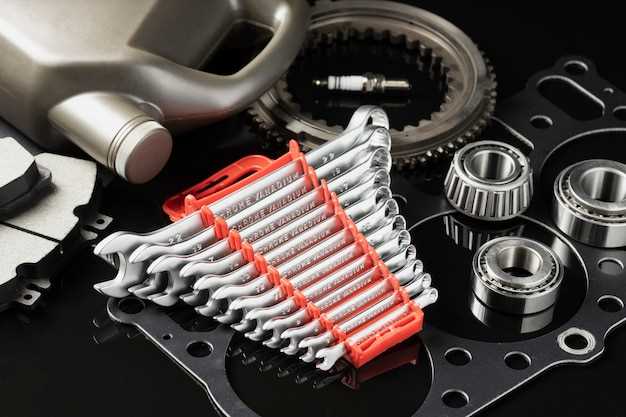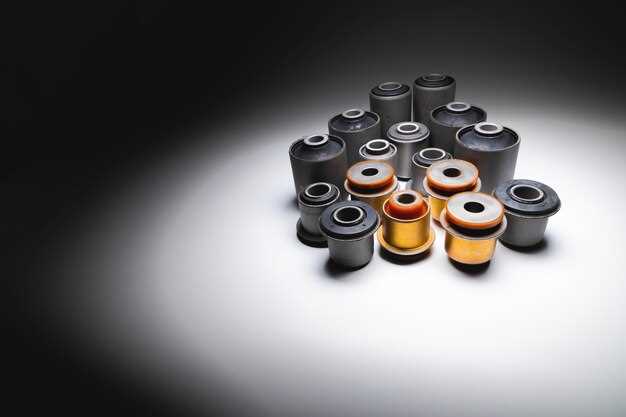
The suspension system of a vehicle is crucial for ensuring optimal handling, comfort, and stability, especially in high-performance applications. One of the often-overlooked components within this system is the bushing. These small yet vital elements serve as insulators between the various suspension components, allowing for relative movement while minimizing noise and vibration.
Bushings are typically made from rubber or polyurethane and play a significant role in the overall performance of the suspension. They absorb shocks and impacts from the road, providing the necessary flexibility for suspension arms and ensuring that the vehicle’s tires maintain contact with the road surface. This adherence is essential for maximizing traction and enhancing the overall driving experience.
In high-performance contexts, the choice of bushings can dramatically influence a vehicle’s handling characteristics. Upgraded or aftermarket bushings can provide stiffer support, reducing unwanted movement and improving responsiveness during aggressive maneuvers. The right bushing can transform how a car behaves in corners, making it feel more planted and predictable. Therefore, understanding the importance of bushings is essential for anyone looking to optimize their vehicle’s suspension setup for racing or spirited driving.
Understanding the Role of Bushings in Suspension Systems
In high-performance suspension systems, bushings play a critical role in ensuring optimal handling and ride quality. These small components, typically made of rubber or polyurethane, act as flexible connectors between various parts of the suspension, such as control arms and the chassis. By absorbing vibrations and shocks, bushings help maintain the alignment and stability of the vehicle, allowing for better road contact and improved cornering capabilities.
One of the primary functions of bushings is to provide a cushion between moving parts. This cushioning effect minimizes metal-to-metal contact, which can lead to increased wear and noise. Additionally, bushings help to isolate road imperfections and vibrations, contributing to a smoother ride for drivers and passengers alike.
There are several types of bushings used in suspension systems, each designed for specific applications:
| Type of Bushing | Material | Application |
|---|---|---|
| Rubber Bushings | Natural Rubber | General use, cost-effective, good for comfort |
| Polyurethane Bushings | Polyurethane | High-performance, firmer feel, improved responsiveness |
| Solid Bushings | Aluminum or Steel | Racing applications, maximum rigidity, increased feedback |
Choosing the right type of bushing significantly impacts suspension performance. Rubber bushings are commonly found in standard vehicles due to their comfort and noise-dampening properties. In contrast, high-performance vehicles often utilize polyurethane bushings for tighter handling and quicker response times. Solid bushings are reserved for racing applications where precision and feedback are paramount, despite sacrificing comfort.
Moreover, the condition of bushings is vital for maintaining suspension effectiveness. Worn or damaged bushings can lead to a myriad of issues, including decreased handling precision, noises during operation, and uneven tire wear. Regular inspection and timely replacement of bushings are essential to ensure peak performance of the vehicle’s suspension system.
In conclusion, bushings are fundamental components in high-performance suspension systems. Their ability to absorb impacts, manage vibrations, and enhance vehicle dynamics underscores their importance in both everyday driving and competitive environments.
Types of Bushings: Rubber vs. Polyurethane
Bushings play a crucial role in the functionality and performance of a vehicle’s suspension system. Among the various types of bushings available, rubber and polyurethane are the most commonly used materials, each with distinct characteristics that cater to different performance needs.
Rubber bushings have been the traditional choice for many years due to their ability to absorb shock and reduce noise. They provide a smooth ride by isolating vibrations and impacts from the road, making them ideal for everyday driving. The inherent flexibility of rubber allows for some degree of movement and articulation within the suspension components, which contributes to overall vehicle comfort. However, as performance demands increase, rubber bushings can become a limiting factor. They tend to degrade over time, leading to reduced performance and requiring more frequent replacements.
Polyurethane bushings, on the other hand, are designed for high-performance applications. They offer increased stiffness and durability compared to their rubber counterparts. This stiffness translates to more precise handling and improved responsiveness, making polyurethane bushings an excellent choice for performance-oriented vehicles and motorsports. Additionally, they resist wear and tear better than rubber, resulting in a longer lifespan and less frequent maintenance needs. However, while they enhance performance, polyurethane bushings may compromise ride quality, as they transmit more road noise and vibrations into the cabin.
In summary, the choice between rubber and polyurethane bushings depends largely on the intended use of the vehicle. For daily drivers and comfort-focused applications, rubber bushings are often preferred. Conversely, for those seeking enhanced performance and handling capabilities, polyurethane bushings are the ideal solution. Understanding these differences helps vehicle owners make informed decisions when upgrading or replacing suspension components.
Impact of Worn Bushings on Vehicle Handling

Worn bushings have a significant impact on vehicle handling, particularly in high-performance suspension systems. Bushings serve as essential components that absorb vibrations and reduce friction between moving parts, maintaining the alignment and responsiveness of the suspension. When these bushings deteriorate, several negative effects can arise.
Firstly, worn bushings lead to increased play or looseness in the suspension components. This can result in unpredictable handling and diminished road feedback, making it difficult for drivers to maintain control, especially during cornering at higher speeds. The lack of precise steering response can compromise the ability to navigate twists and turns effectively.
Secondly, compromised bushings contribute to excessive tire wear. With the suspension unable to maintain optimal alignment, tires may experience uneven contact with the road surface, resulting in premature wear and reduced traction. This not only affects performance but can also pose safety risks, as vehicle stability is compromised.
Furthermore, as bushings wear out, the increased noise and vibration can lead to driver fatigue over time. The discomfort can detract from the overall driving experience, making high-performance vehicles less enjoyable to operate. Additionally, the vibrations can accelerate wear on other suspension components, leading to costly repairs.
In conclusion, ensuring that bushings are in good condition is crucial for maintaining optimal vehicle handling. Regular inspections and timely replacements of worn bushings directly influence the effectiveness of the suspension system, thereby enhancing overall driving performance and safety.
Choosing the Right Bushings for Performance Upgrades

When upgrading your vehicle’s suspension for high performance, selecting the appropriate bushings is crucial. Bushings play a significant role in the overall handling, ride quality, and responsiveness of the suspension system. Here are some key factors to consider when choosing bushings for performance upgrades:
- Material:
- Rubber: Traditional option that provides good comfort and noise dampening, but may not be optimal for high-performance applications.
- Polyurethane: More durable and resistant to wear than rubber. Offers improved handling and responsiveness, making it a popular choice for performance vehicles.
- Metal or spherical: These bushings provide the most precise handling and control but may transmit more noise and vibrations.
- Hardness: The hardness of bushings is measured in durometers. Softer bushings provide a more comfortable ride, while harder options offer better performance and reduced flex. Choose based on your driving style and specific performance goals.
- Fitment: Ensure the bushings are specifically designed for your vehicle’s make and model. Proper fitment is essential for maintaining suspension geometry and performance.
- Type of driving:
- Street Driving: Consider a balance between stiffness and comfort; polyurethane bushings can provide the right compromise.
- Track Driving: Opt for stiffer materials and precision-fit bushings that can handle the increased demands of racing scenarios.
- Off-Road Driving: Look for bushings that can withstand harsh conditions and resist wear and tear.
Finally, do thorough research on specific products and brands. Read reviews and seek recommendations from fellow enthusiasts or professionals to ensure that the bushings you choose will meet your performance expectations.
Installation Tips for Optimizing Bushing Performance
Proper installation of bushings is crucial for maximizing the performance of your high-performance suspension system. To achieve optimal results, follow these key tips:
1. Choose the Right Bushings: Ensure that you select bushings specifically designed for your vehicle’s make and model. High-quality, performance-oriented bushings made from materials like polyurethane can vastly improve handling and responsiveness compared to standard rubber alternatives.
2. Clean the Mounting Areas: Before installation, thoroughly clean the surfaces where the bushings will be seated. Remove any dirt, rust, or old lubricant. This will help ensure a proper fit and enhance the bushings’ effectiveness.
3. Use the Correct Tools: Invest in appropriate tools when installing bushings. Using a bushing installation tool or a press will help you achieve an even fit without damaging the components, which is essential for maintaining the integrity of your suspension system.
4. Lubricate Properly: Apply a compatible lubricant to both the bushings and the mounting surfaces. This will reduce friction, allowing the bushings to perform correctly and extend their lifespan. Avoid excessive lubrication, as it can attract dirt and debris.
5. Align Suspension Components: After installation, check the alignment of the suspension components. Misalignment can lead to uneven wear on the bushings and affect the overall performance of your suspension setup. Proper alignment will also improve handling and ride quality.
6. Torque Specifications: Ensure that all bolts and fasteners are tightened to the manufacturer’s specifications using a torque wrench. Over-tightening can cause premature bushing failure, while under-tightening may lead to movement and instability in the suspension.
7. Test Drive and Inspect: After installation, take your vehicle for a test drive to check for any unusual noises or handling issues. Inspect the bushings periodically to ensure they remain in good condition and are properly seated, especially after the first few hundred miles.
By following these installation tips, you can optimize the performance of bushings in your high-performance suspension system, leading to a more responsive and enjoyable driving experience.
Maintaining Bushings for Longevity and Performance
Maintaining bushings is crucial for ensuring the longevity and performance of high-performance suspension systems. Regular inspections play a vital role, allowing you to identify wear or damage early. Check for cracks, tears, or signs of excessive compression that can indicate that the bushings need replacement. An annual inspection, especially before the racing season, is recommended for optimal performance.
Proper lubrication is another key factor in bushings maintenance. Using manufacturer-recommended grease can reduce friction and prevent the degradation of the bushing material. This will ultimately enhance the responsiveness of your suspension setup. Over time, the lubricant can dry out, so it’s essential to periodically reapply and ensure the bushings remain flexible.
Environmental factors also affect bushing durability. Exposure to extreme temperatures, moisture, and road debris can accelerate wear. Whenever possible, park your vehicle in a sheltered area to minimize these effects. Additionally, keeping your vehicle clean, particularly the suspension components, helps prevent dirt and grime buildup that can compromise the integrity of the bushings.
Consider upgrading to high-performance synthetic bushings that offer better resistance to environmental challenges and are engineered to withstand the demands of aggressive driving. These specialized bushings often provide improved handling characteristics and reduced deflection, contributing to enhanced driver control.
Finally, maintaining proper alignment and suspension geometry can prolong the life of bushings. Misalignment can cause uneven wear and increased stress on suspension components. Regularly having your vehicle’s alignment checked after any significant suspension work will ensure that bushings are bearing forces as intended and prolong their functional lifespan.
